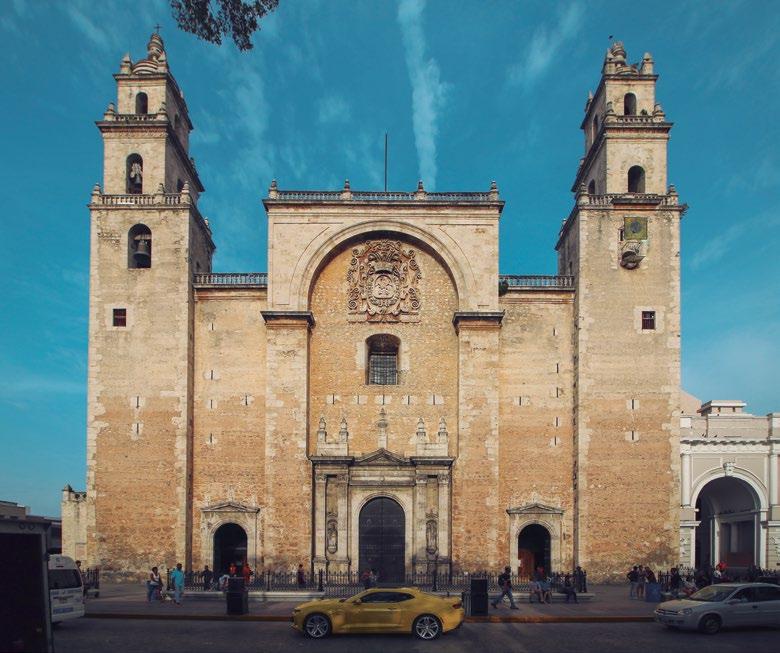
3 minute read
La Catedral de Mérida
La catedral de Mérida es una de las atracciones de la ciudad y la primera en ser construida en América Latina entre los años de 1562 y 1598, además de ser la más antigua en México, se le conoce también como la Catedral San Ildefonso. Su historia comienza desde la conquista de los españoles a la antigua T´Hó, se percataron que tenían que construir una iglesia. La petición de edificar una catedral fue del rey Felipe II y la autorización fue del Papa Pío IV.
Se les encomendó la labor de construcción a Juan Miguel Agüero y Pedro de Aleustia y del colaborador Gregorio de la Torre. La edificación original de la catedral tenía 5 capillas, pero 2 fueron demolidas (la capilla del Rosario y la capilla de San José). La razón de su demolición fue para separar a la catedral del Palacio Episcopal, lo que hoy es en la actualidad el Museo Fernando García Ponce- MACAY y el pasaje revolución. Su fachada es de estilo renacentista, la puerta de perdón posee un arco de medio punto enmarcada por columnas en ambos lados, en cada uno se encuentran dos imágenes de San Pablo y San Pedro.
Advertisement

En el acceso principal está ubicada la cornisa con un frontón triangular, y encima hay una ventana que actualmente le corresponde al coro donde está el piano, pero no se puede ver porque está enmarcado por 2 enormes columnas de orden toscano, las cuales sostienen el enorme arco. En el interior hay 12 columnas dóricas, 6 en ambos lados y estos representan a los doce apóstoles de Jesús. El altar mayor de la catedral alberga al considerado cristo más grande, Cristo de la unidad, mide 14 metros y fue construido por el artista español Lapayese del Río. A un costado se localiza el cristo de las ampollas (cristo negro), imagen muy venerada por la gente.
Editorial completa en explore.mx


Merida's Cathedral
The cathedral of Mérida is one of the attractions of the city and the first to be built in Latin America between the years of 1562 and 1598, in addition to being the oldest in Mexico, it is also known as the Cathedral of San Ildefonso. Its history begins from the conquest of the Spanish to the ancient T´Hó, they realized that they had to build a church. The request to build a cathedral was from King Felipe II and the authorization was from Pope Pius IV.


Construction work was entrusted to Juan Miguel Agüero and Pedro de Aleustia and collaborator Gregorio de la Torre. The original building of the cathedral had 5 chapels, but 2 were demolished (the Rosario chapel and the San José chapel). The reason for its demolition was to separate the cathedral from the Episcopal Palace, which today is now the Fernando García PonceMACAY Museum and the Revolution passage. Its facade is in the Renaissance style, the door of forgiveness has a semicircular arch framed by columns on both sides, each containing two images of Saint Paul and Saint Peter. In the main access the cornice with a triangular pediment is located, and above there is a window that currently corresponds to the choir where the piano is, but it cannot be seen because it is framed by 2 huge columns of Tuscan order, which support the huge arc. Inside there are 12 Doric columns, 6 on both sides and these represent the twelve apostles of Jesus. The main altar of the cathedral houses the considered largest Christ, Christ of Unity, measures 14 meters and was built by the Spanish artist Lapayese del Río. On one side is the Christ of the Blisters (black Christ), an image highly revered by people.
Complete editorial at explore.mx








